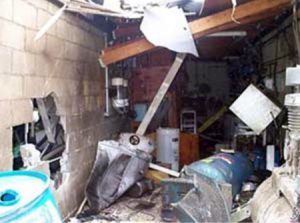 Compressed air is a valuable utility and a safe power source when used properly. As with any other energy- carrying power source, compressed air should be regarded with caution and handled with care to avoid accidents and user injury.
Compressed air is a valuable utility and a safe power source when used properly. As with any other energy- carrying power source, compressed air should be regarded with caution and handled with care to avoid accidents and user injury.
General Safety Requirements for Compressed Air:
- All pipes, hoses, and fittings must have a rating of the maximum pressure of the compressor.
- Compressed air pipelines should be identified (psi) as to maximum working pressure.
- Air supply shutoff valves should be located (as near as possible) at the point-of-operation.
- Air hoses should be kept free of grease and oil to reduce the possibility of deterioration.
- Hoses should not be strung across floors or aisles where they are liable to cause personnel to trip and fall.
- When possible, air supply hoses should be suspended overhead, or otherwise located to afford efficient access and protection against damage.
- Hose ends must be secured to prevent whipping if an accidental cut or break occurs.
- Before a pneumatic tool is disconnected (unless it has quick disconnect plugs), the air supply must be turned off at the control valve and the tool bled.
- Compressed air must not be used under any circumstances to clean dirt and dust from clothing or off a person’s skin.
Shop air used for cleaning should be regulated to 15 psi unless equipped with diffuser nozzles to provide less pressure.
- Goggles, face shields or other eye protection must be worn by personnel using compressed air for cleaning equipment.
SAFETY IS A FRAME OF MIND…SO CONCENTRATE ON IT…ALL THE TIME!!
Download flyer: STOTW_835_Air Compressor Safety Download Spanish flyer: STOTW_835_Air Compressor Safety_esp

